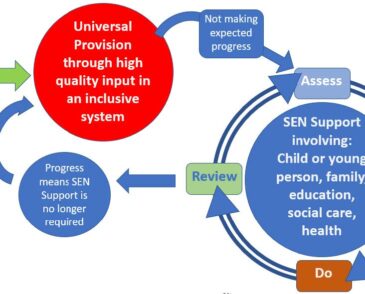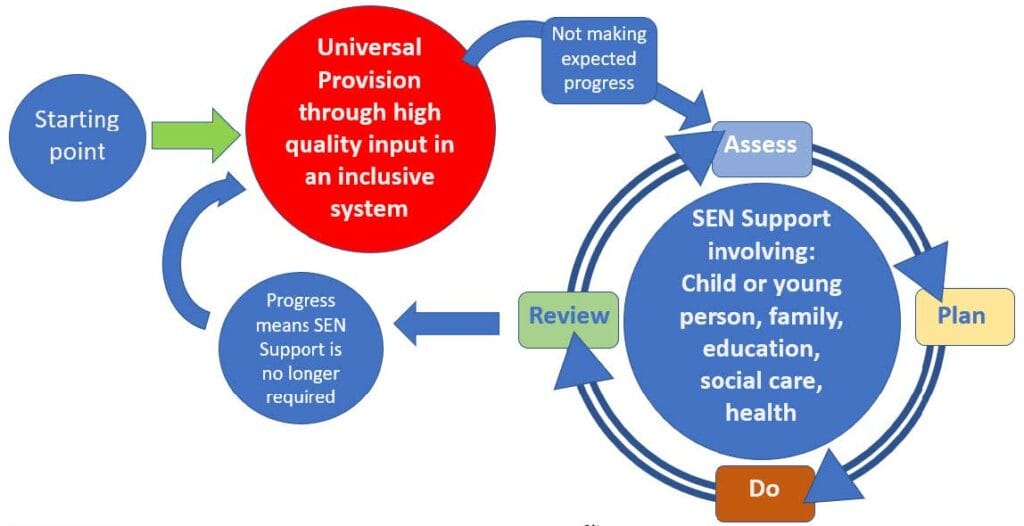

Last Updated - January 2, 2025
The Assess, Plan, Do, Review Cycle
The Assess, Plan, Do, Review cycle is how the Graduated Response is put in place. It can be repeated as many times as needed to help the child or young person progress.
If a child or young person is not making the expected progress, the first step is to collect the right information and find the right people to be able to plan support. This will include the views of the child or young person and their family, information from their teachers and the views from any other service or organisation involved in the life of the child or young person. This is the Assess stage of the cycle.
The second step is the Plan stage of the cycle where the child or young person and their family agree, with their teachers and the special educational needs co-ordinator (SENDCo), on the new interventions and support that will be put in place. They will also agree the expected outcomes. The agreement will be recorded on the school’s systems and explained to the involved teaching staff.
The Plan stage of the cycle is when the plan is put into practice with the child or young person’s class teacher or subject teachers being responsible for checking that the plan is working on a daily basis.
The impact of the plan is reviewed by the child or young person and their family, teachers and the SENDCo. This is the Review stage of the cycle.
At this stage, progress may have been made which means the child or young person no longer requires special educational needs support. In this case the child or young person will continue to receive Universal Provision.
This cycle is reviewed continuously which means some children and young people no longer require support and some may continue with different or additional support and provision.

